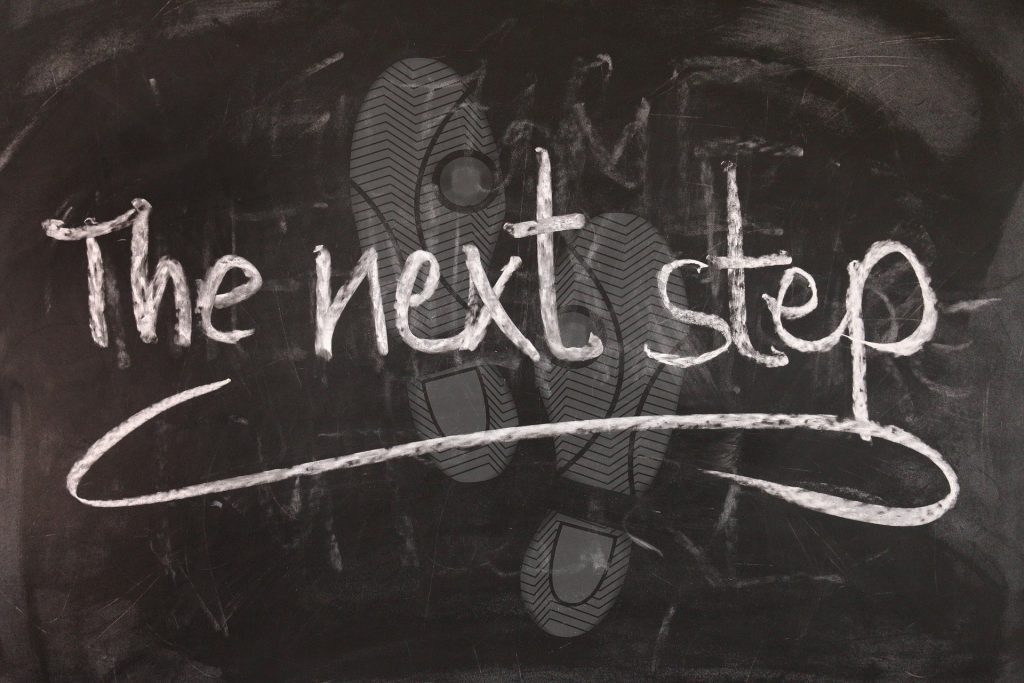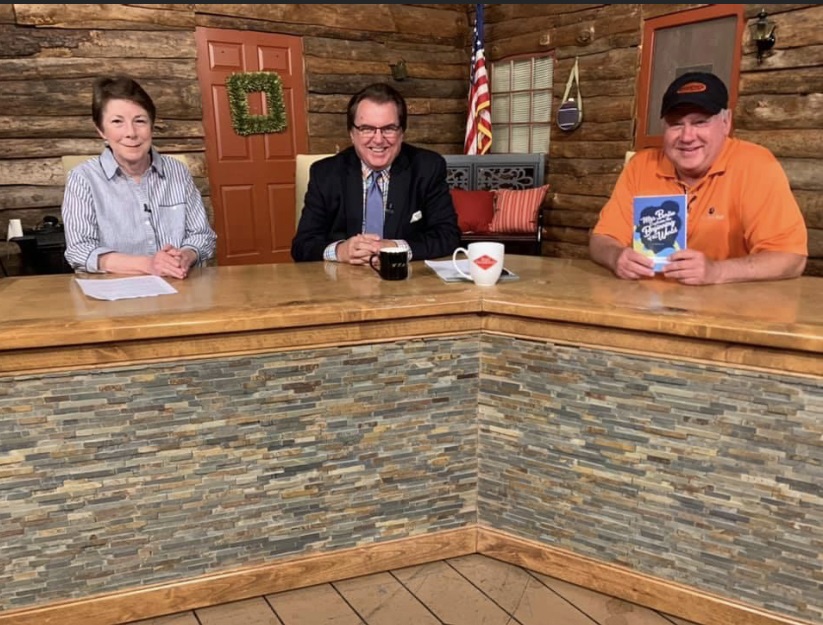Category: Marketing
Writing about the Community
It’s possible to build a full-time freelance writing career serving people in your own community. In my work as a local writer, I’ve been able to network within a professional community of public relations practitioners and other communicators who need regular marketing content. As a result, the work-for-hire projects I’ve gotten as a writer have largely come from people I know or people who know people I know. For example, among the projects I juggle for various marketing clients, I recently talked with local leaders to write these pieces for the Montgomery Business Journal:
A Visit on the Front Porch
It was so much fun to talk with Kenny Dean and Terry Mitchell during my visit to The Front Porch, a local TV program based in my hometown of Alexander City, Alabama. I was fortunate to be scheduled as the last guest for an early morning program. You can find me 1 1/2 hours into the video from the live stream:
https://www.facebook.com/TheFrontPorchonWAXC/videos/134345945350948/
Recent Projects
It was a pleasure to talk to the people bringing new businesses to interesting and historic neighborhoods in Montgomery. #MyMGM – Cottage Hill’s Redevelopment Restores and Revives – PublicLayout-blog – Montgomery Area Chamber of Commerce – AL, AL (montgomerychamber.com)
I also enjoy writing about community organizations. This piece for the Montgomery Business Journal highlights how a non-profit agency helps individuals with developmental disabilities train for, find and thrive in a job. GiveBack: Win-Win at Work – PublicLayout-blog – Montgomery Area Chamber of Commerce – AL, AL (montgomerychamber.com)
Writing and Publishing Tips
This was the first time I’d ever been interviewed for a podcast, and I enjoyed talking with the folks about TAB Media about my work as a writer for marketing and communications projects, as well as my novella, Miss Bertie Explains the Beginning of the World. Our conversation was through Zoom, which they recorded and also uploaded to their Youtube channel. The conversation is at this link …
5 R’s for Navigating Change
If I picked one word that is the key to my life as a creative solopreneur, it is this one:
Resilience.
I wish someone had tipped me off to this word when I began my freelance writing career, but I had to learn it through experience.
I launched my journey as an independent copywriter 20 years ago. In 2001, I onboarded my best-paying copywriting client. Hooray! In 2003, that client went away. Oh, dear.
It’s been like that ever since.
There are cycles to business needs and business relationships. I can be there to meet the opportunity when it’s there, but let it go if it goes.
Year ago, I signed a temporary client. We discussed working together for a couple of months on a weekly editing project, at least until she could replace her assistant. Thirteen months later, she replaced her assistant.
I said goodbye.
When that assistant left, I came on board for another couple of months for regular editing work until she could replace her assistant.
Four months later I said goodbye.
This happened once more. A temporary assignment. This time it lasted two years before I said goodbye.
Some things go away, some things come back. Resilience enables a creative entrepreneur to let go as it goes but welcome it back the next time around. Or respond to the changed environment and regroup.
R is a great letter for words that guide: Resilience. Respond. Regroup.
And, of course, this one: Relationship.
Build that, and you may get them again on the Rebound.
3 Questions for Alarming Times

Last week, I had my first in-person meeting since the pandemic began. I’m a writer in Montgomery, Alabama, and I headed downtown for article interview. Everything went fine until I returned home to discover that my house alarm was blaring.
The problem was compounded by the fact that I could not turn it off. The keypad didn’t work. This was a full system breakdown, and I didn’t know how to pull the plug on the alarming noise filling my home.
Clearly, the writing assignment would have to wait.
I called my security company for help. The over-the-phone recommendations didn’t help. The rep pulled a tech off another job and sent him to my place to deactivate the alarm.
So my cat and I were there in the house for about 30 minutes while the alarm blared. These moments were stressful. I couldn’t think straight. My cat was confused and concerned. All I could do was wait.
When the tech arrived, he was polite, helpful, and efficient. I was relieved that he was there. He detached the wires, but the system was shot. I would need a new one. He returned first thing Monday morning – again, polite, helpful and efficient – and installed my new system.
Naturally, I can make an analogy to being a creative entrepreneur in this era of pandemic.
Sometimes the situation is like standing in the house with the alarm blaring, and I’m looking at the cat and saying “I’m sorry, sweetie, this isn’t easy for either of us.”
In this mode of panic, it’s hard to think straight. It’s hard to be creative. Later, when the house was quiet again, I had an idea: I could have gone to the electrical panel and shut off the power to the circuit that wired the alarm. I didn’t think of it at the time.
That’s what the first weeks of quarantine were like … “I can’t get my hair cut? I can’t go out to lunch? Church is closed for two weeks? I have to cook?”
All of which boiled down to this question: “How will I survive?”
Sometimes the pandemic is like an eternal window of waiting for a service technician. (“We have you on the schedule, and he’ll be there sometime between March and August.” Or: “I wanted to let you know he’s been slightly delayed so it might be January. Sit tight, and we’ll keep you posted.”)
What do you do while waiting? Well, you look around. You ask, “What needs tending to? How can I make use of my time.”
My question moved from “How will I survive?” to “How will I thrive?”
The latter is a better question because it brings more energy. It comes at the problem with more optimism and allows for creative thinking. I did make some choices: publish a novella, launch a podcast, increase my content production and paint my interior walls – all of which have provided a feeling of thriving even as I wait.
Then there’s the third question.
Sometimes the pandemic is like, “I’m so glad that technician was able to help me.” He was polite, he wore a mask, he gave me plenty of space. And he made the house quiet again. Even in this strange time, he served at a higher level. He did one thing, in fact, that was quite extraordinary. He noticed that the plate for my front door knob had been installed backwards, which meant that I had to turn the knob to close the door.
I hadn’t thought about it. It never occurred to me that this plate, installed last year, had been placed backwards. He offered to switch it around, and I said, “Sure.”
That act represents how I moved to my third question. I’ve gotten through “How will I survive?” I have asked, “How will I thrive?” But the one going forward?
“How can I help others?”
With creative thinking and the energy that comes from a new question, I’m looking forward to discovering lots of new answers.
How about you? What questions are you asking today? Do they allow for creative thinking and renewed enthusiasm? If not, how can you change those questions?
Is Your Creative Content Getting Seen and Heard?
 One of the most frustrating parts of this pandemic is saying something quite brilliant during a Zoom meeting only to discover that you’re still on mute. “Click the button at the bottom left,” everyone on the call will willingly tell you.
One of the most frustrating parts of this pandemic is saying something quite brilliant during a Zoom meeting only to discover that you’re still on mute. “Click the button at the bottom left,” everyone on the call will willingly tell you.
So now you have a choice to either: 1) click the button at the bottom left, or 2) question the judgement of everyone else. Will you ask, “How do I know if that approach is right for me? What if I’m just not a ‘click the icon at the bottom left’ kind of person?” Or will you heed the advice: “Wait, this button?”
Content marketing can be like that too – in that prescribed theories don’t always feel as if they’re working. Plus, a lot of people are quick to tell you how to get your content strategies right, although it can still feel as if you aren’t being seen or heard.
Here are some suggestions for improving content creation and connections:
Provide inspiration. Most people could use a little dose of hope. Share it if you’ve got it.
Solve a problem. Think back to your own experience. If something was a problem for you, it’s probably a problem for someone else.
Be concise. Attention spans are short. A lot of your readers want to scan quickly.
Analyze results. If you’re not getting the results you want, is it the audience, the message, the tone, the timing, the consistency, the takeaway, the platform, the brand? At different times, I’ve dealt with all of these issues with content I write. In general, though, look for where you see energy and where you see stagnation, then go toward the energy.
Learn from the leaders. What organization or person similar to your brand is achieving content marketing success? I’m tempted to say follow that leader, but maybe I’m just not a “click the icon at bottom left” kind of person. So I’ll just say, learn from that leader, and then …
Play your own game. Content marketing is not one-size-fits-all. You can actually create your own goals, rules and measures for content success – and play to win based on your own values and strategies.
Minnie Lamberth is a full-time content writer focused on marketing, leadership and communications projects, as well as an inspirational author and creative encourager.
Photo by Andrew Neel on Unsplash
When to Cut Your First Sentence
 I realized in hindsight that I didn’t have to include the word “podcast” in my podcast title.
I realized in hindsight that I didn’t have to include the word “podcast” in my podcast title.
Sometimes people adapting to a new format use their first moments to announce that they are adapting to a new format. I heard this yesterday as I listened to someone use his podcast introduction to basically say, “I’m recording a podcast.”
Earlier in the pandemic, I clicked to view a video of a gentleman who began his video by announcing that he was recording a video.
You can also figure out someone is new to web technology (or hasn’t updated website content in a few years) when you land on a page that says “This is our website.”
Our first sentences in any writing project are often about how we are trying to figure out what we want to say – or how we’re adapting to a new way of sharing this message.
So, yes, go ahead and work that out for yourself in your rough draft. But be willing to delete those first few sentences before you record, post or send. People can figure out on their own which format you’re using. Focus in on your message.
Photo by Glenn Carstens-Peters on Unsplash
Learning New Marketing Technology for Writing Projects
 Is your learning curve accelerating? Mine sure is. Especially since I decided to launch a podcast and publish a book as part of content marketing strategies for a writing business.
Is your learning curve accelerating? Mine sure is. Especially since I decided to launch a podcast and publish a book as part of content marketing strategies for a writing business.
This need to move quickly in and around digital platforms is probably best represented by the fact that I now have a Venmo account. Five days ago, I did not have such an account. Then a request came in for a signed copy of my new novella … with the follow-up question, “Do you have Venmo?”
Within just a few minutes, I opened a Venmo account and responded, “Yes, I have Venmo.”
Over the last couple of weeks, I worked through the various issues of hosting a podcast … after I’d worked through issues of recording and editing a podcast. Prior to that, I figured out how to publish a book via Amazon KDP. So, yes, I’ve learned a lot.
But here’s the thing that hasn’t changed. Every time I come face to face with a new digital marketing platform or technological process, I feel overwhelmed. I enter with fear, uncertainty and confusion wrapped up in a big box of “How will this ever work?”
Yet here’s the other thing that hasn’t changed: I get to the other side of that question one step at a time.
A well-known book by Dr. Robert Maurer, One Small Step Can Change Your Life, is based on principles of Kaizen, a philosophy used by Japanese businesses to make improvements. The Kaizen method involves making an improvement by taking a small step – often the smallest possible – which reroutes the circuits in your brain that cause you to feel overwhelmed.
The Kaizen method is an effective way to approach learning something new – such as publishing a book or recording a podcast. Yet it’s also a useful approach for overcoming your resistance to doing something you already know how to do.
For example, you already know how to make up your bed, but you don’t feel like it. So you tell yourself, “I will put a pillow back in place.” That small step gives you the momentum to take the next one, and you end up making up the bed.
Obviously in your business life you might want to apply that process to a more profitable outcome. For example, the need to send a follow-up email to a prospect is pressing on you. You already know how to send an email, but you don’t feel like it. What’s the smallest step you can take to get started? Take that step, then move on to your next one.

